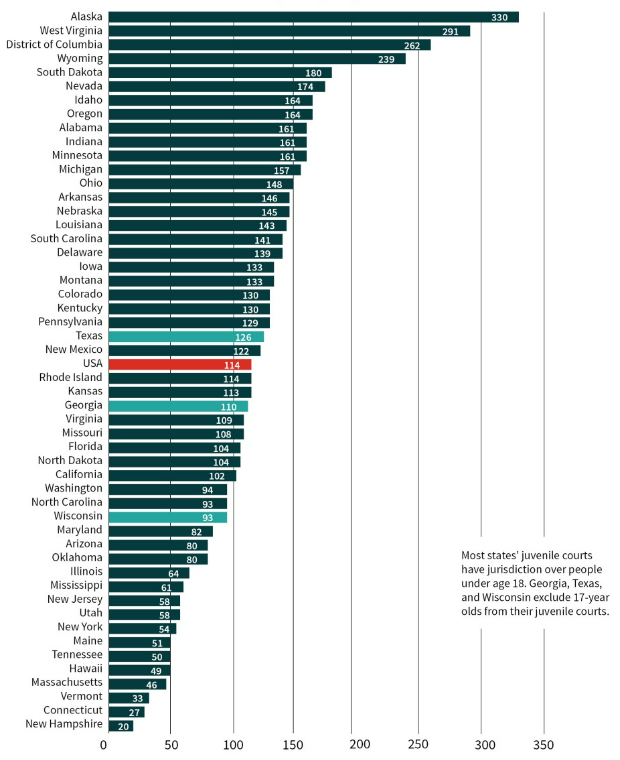Youth Incarceration Declines, Racial & Ethnic Disparities Remain
Youth incarceration rates fell in the last decade after increase in the 1990s

In a newly published report from The Sentencing Project, youth incarceration in the United States has seen a 77% decrease from 2000 to 2020, after a significant increase in the 1990's. Between 2000 (noted as the peak year of youth incarceration rates) and 2020, the number of youth held in juvenile justice facilities on a typical day fell from 108,800 to 25,000. The one-day count for 2020, taken in late October, represents a drop of more than 30% versus 2019, likely reflecting both declines in youth offending and arrests during the pandemic and reduced use of incarceration for arrested youth to reduce the spread of COVID in facilities.
Despite this welcomed decrease in youth incarceration rates, racial and ethnic disparities remain. Youth of color are much more likely than white youth to be held in juvenile facilities. In 2019, the white placement rate in juvenile facilities was 72 per 100,000 youth under age 18. By comparison, Black youth were 4.4 times as likely to be incarcerated (315 per 100,000); Tribal youth were 3.2 times as likely (236 per 100,000); and Latino/a youth were 27% more likely (92 per 100,000). Asian youth were the least likely to be held in juvenile facilities (19 per 100,000).
Disparities in youth incarceration arise both from differences in offending and from differential treatment at several points with the justice and carceral systems. Black youth are more likely to be arrested than their white peers, more likely to be detained upon their arrest, and are continually treated more harshly as they move through the system. Upon arrest, white youth are more likely to be diverted from formal system involvement. When found delinquent via a juvenile conviction, white youth are more likely to receive probation or informal sanctions, whereas Black youth are more likely to be incarcerated.
You can download the full report "Youth Justice by the Numbers" (opens in PDF) from The Sentencing Project.










